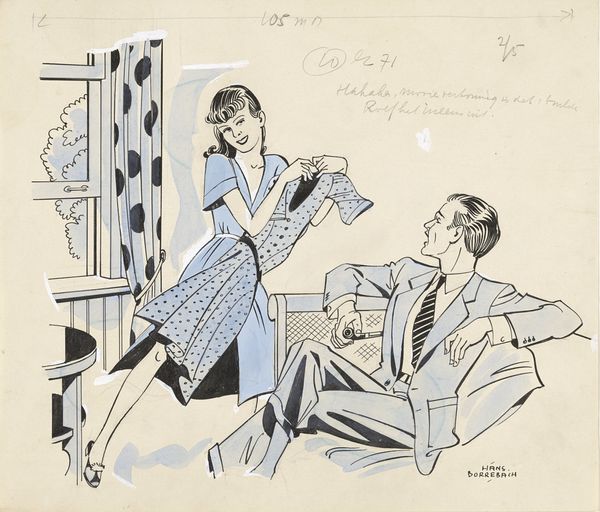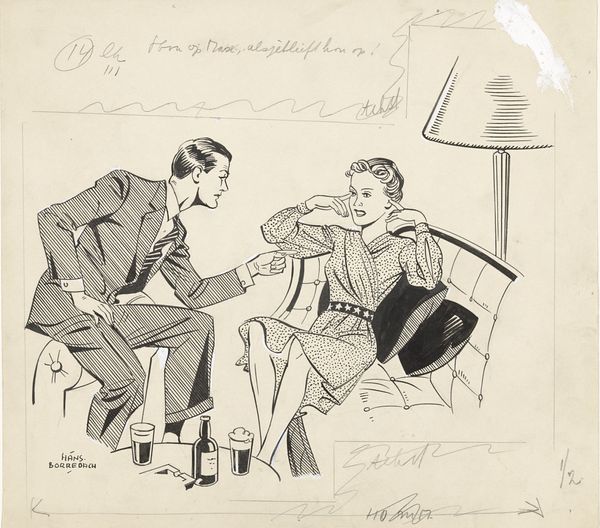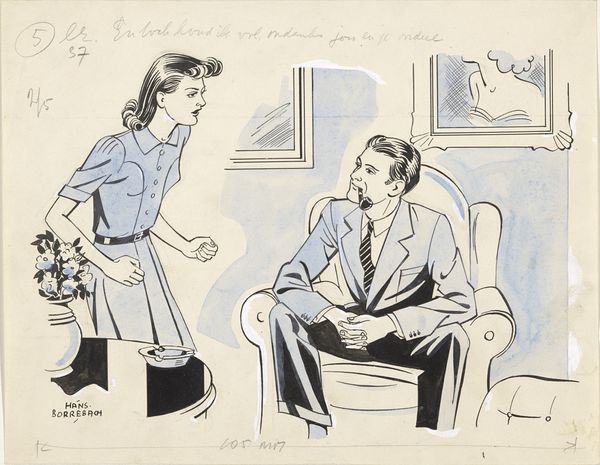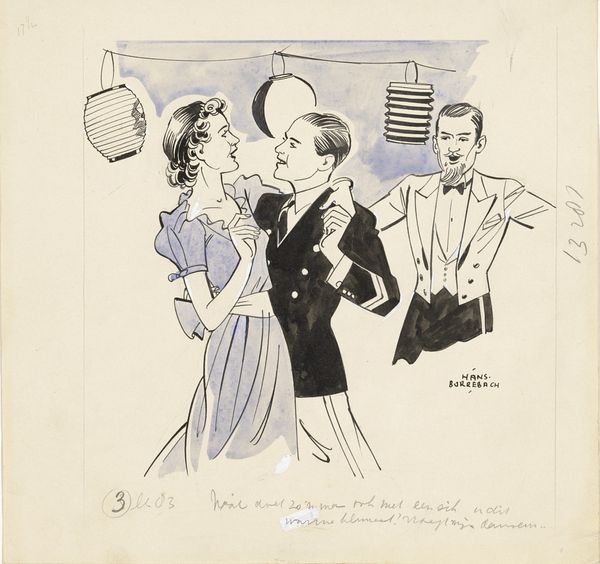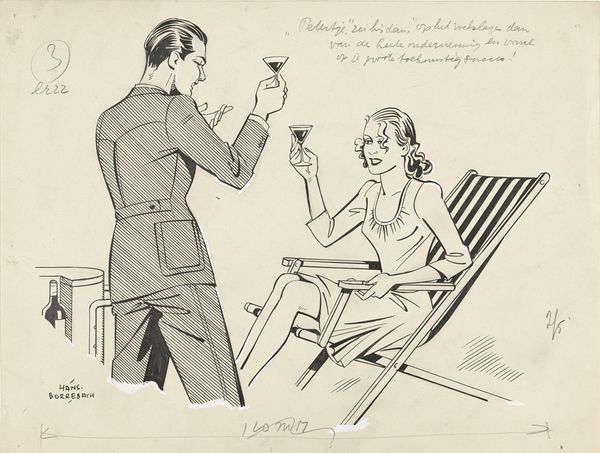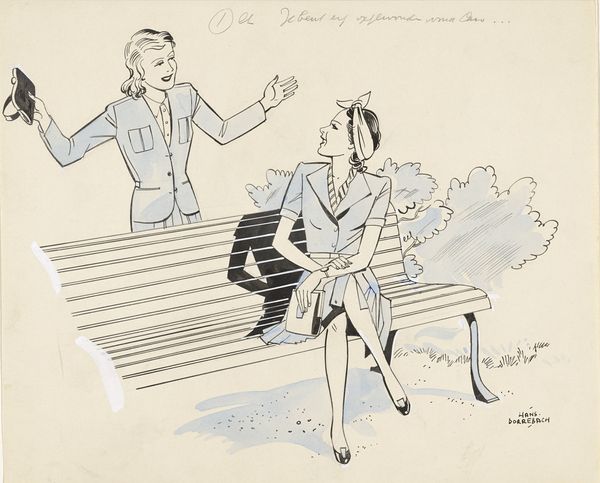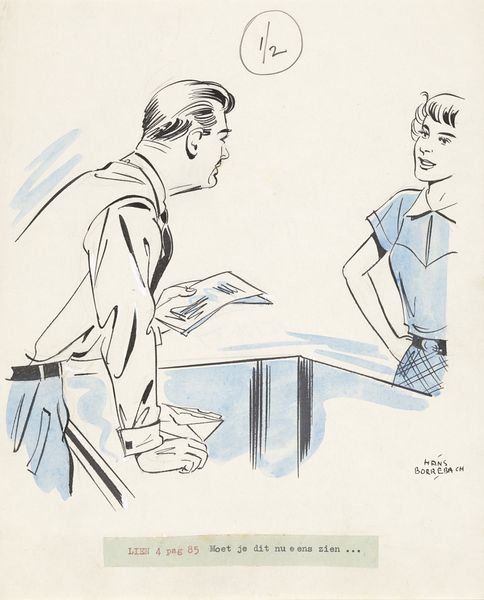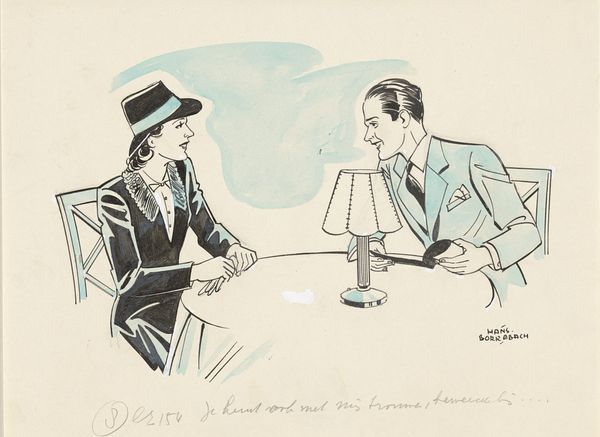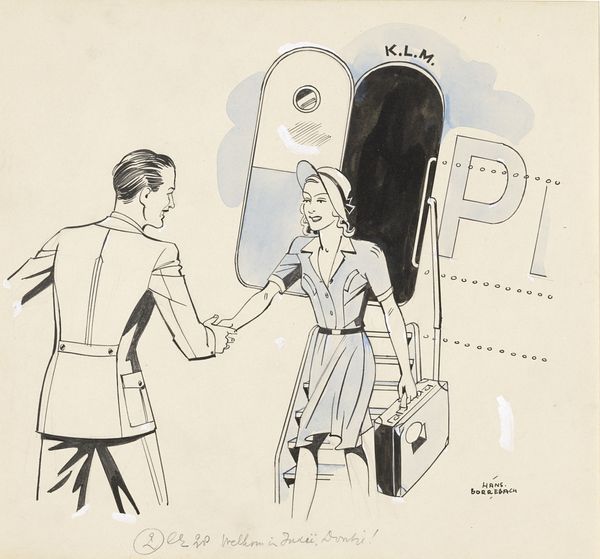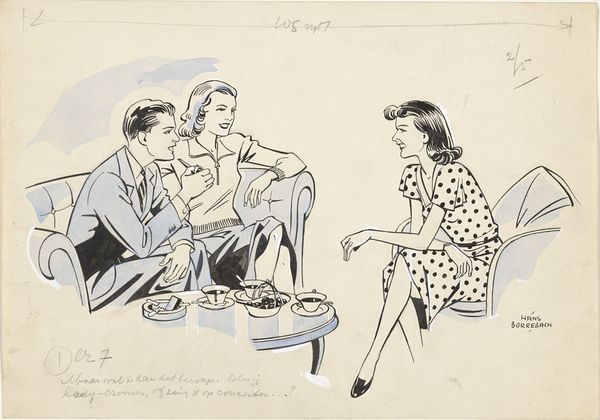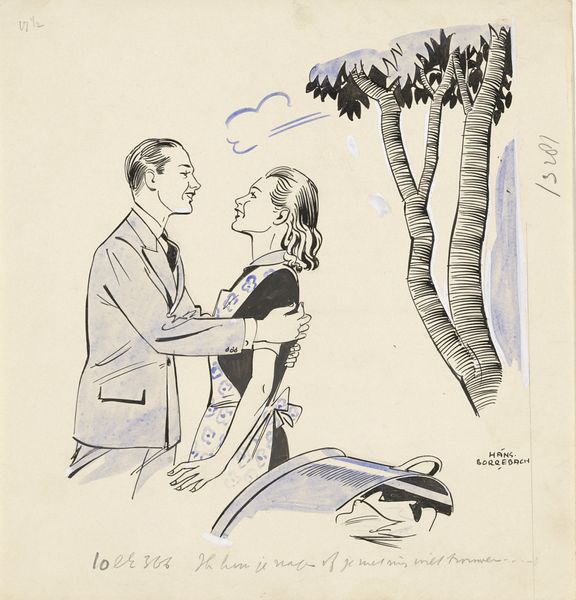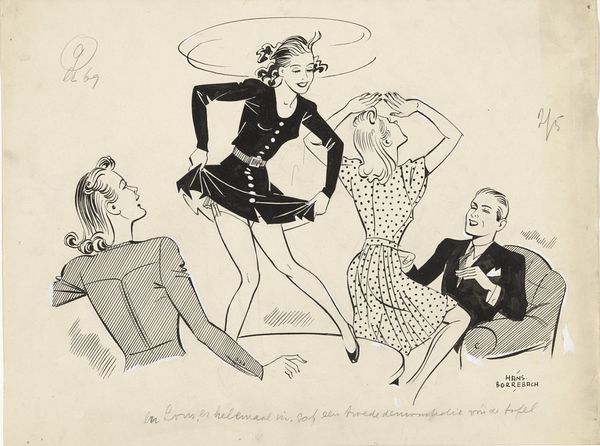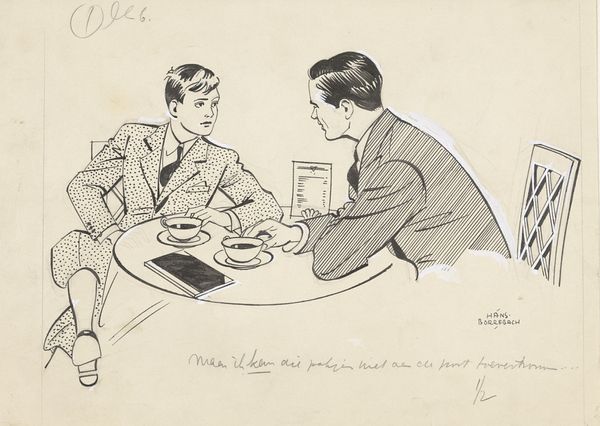
drawing, pen
#
portrait
#
drawing
#
comic strip sketch
#
imaginative character sketch
#
cartoon sketch
#
figuration
#
personal sketchbook
#
idea generation sketch
#
sketchwork
#
character sketch
#
sketchbook drawing
#
pen
#
genre-painting
#
storyboard and sketchbook work
#
sketchbook art
#
modernism
Dimensions: height 202 mm, width 253 mm
Copyright: Rijks Museum: Open Domain
Curator: Here we have a pen drawing by Hans Borrebach, titled "Pepita kijkt vragend naar Max met een ring in haar hand," which translates to "Pepita Looks Questioningly at Max with a Ring in Her Hand." We estimate this dates to before 1948. It's a fascinating glimpse into… well, what's your initial read? Editor: Woah, the drama! I instantly get a feeling of a mid-century lovers' quarrel. Look at the way the woman is holding that ring, the question in her eyes, and the man's stiff posture—there's a story bubbling beneath the surface here. Curator: Absolutely. Consider the production and context: This seems less a polished artwork and more a preparatory drawing, likely for a comic strip or illustration. The visible sketch lines and annotations indicate a step in a larger process of narrative creation and, crucially, industrial output. Editor: Yes, you see all the construction, which, okay, is true, but the composition also just WORKS. There’s tension, see? The angular lines of his suit clash with her softer, rounded features. It's a power dynamic visualized through form! You feel her vulnerability, even in the simplicity of the drawing style. Curator: I agree about the narrative charge. Note the visible evidence of technique, the cross-hatching providing depth but also speed of creation—mass producibility being a consideration, after all. But the tension for me exists in its display, the fact that this is presented out of this probable intention, becoming ‘Art’ divorced from commercial goals. Editor: Art can’t escape commercial pressure, even accidentally! That's part of what it becomes as well, though. I feel the rawness of the medium amplifies her…anxiety? Is it a proposal? A broken promise? What's in those gift boxes? Curator: Consider the material conditions that give it the aesthetic heft we’re assigning it: a commercial sketch that, because of time and its status as a drawing, we find visually and emotionally powerful. Editor: True, its fragmented context lends itself to the multiple, personalized narratives we can each generate as observers. To me, there's a timeless quality, really – the drawing is about to begin a conversation between two people and draw the viewer right in. Curator: And for me, the nature of drawing makes me realize that behind every aesthetic vision, every personal narrative, is a set of choices bound to a network of socio-economic practices, no matter how transparent. Editor: It's this push and pull, perhaps even struggle, that gives it that tension, that magic. That's what elevates the ordinary!
Comments
No comments
Be the first to comment and join the conversation on the ultimate creative platform.
